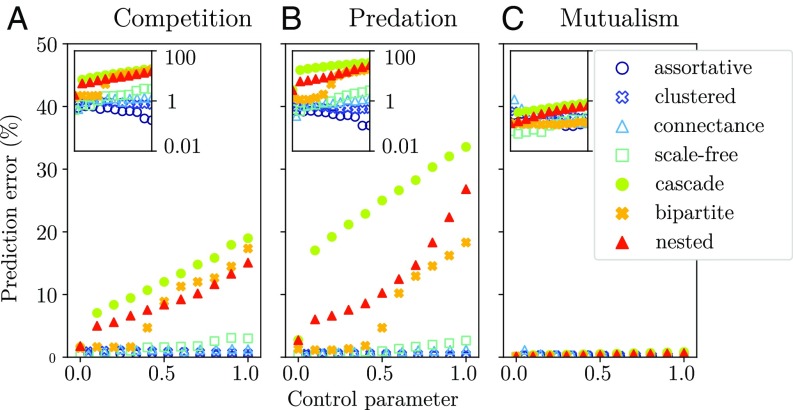Fig. 4.
Network structure and deviation from the disordered limit. For the three main interaction types—(A) competition, (B) predation, and (C) mutualism—we show the relative error (y axis, between 0% and 50%) of the reference model predictions against simulations; see Eq. 7. (Insets) Same results in log scale. The symbol sets correspond to different network structural properties: assortativity, partitioning, clustering, nestedness, and scale-free or cascade structure. Each comes with a specific control parameter (x axis; see list in SI Appendix, Numerical Experiments), allowing transition from an Erdos–Renyi random graph to a maximally structured network. For instance, the probability of attaching preferentially to nodes with higher degree yields a scale-free network when . We also vary connectance in a random graph. We see that only bipartition, cascade structure, and nestedness cause deviations from null predictions in competitive and predatory interactions, and none do so in mutualistic communities (where interaction strength is limited; see Materials and Methods).

